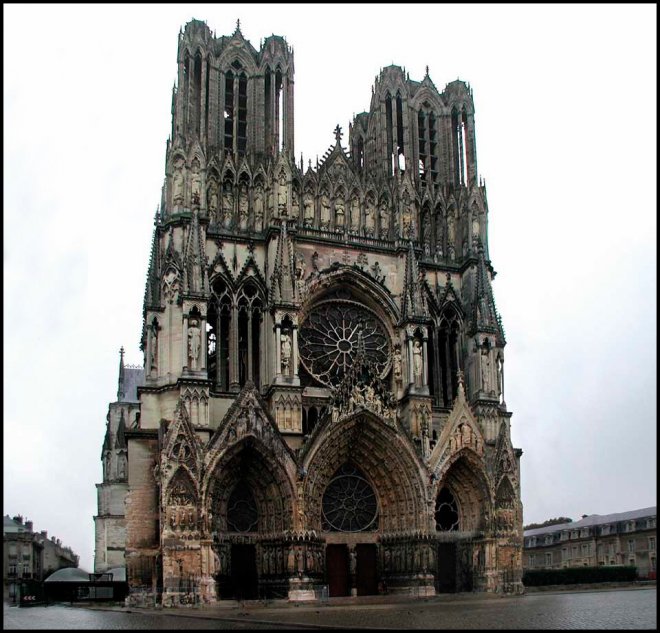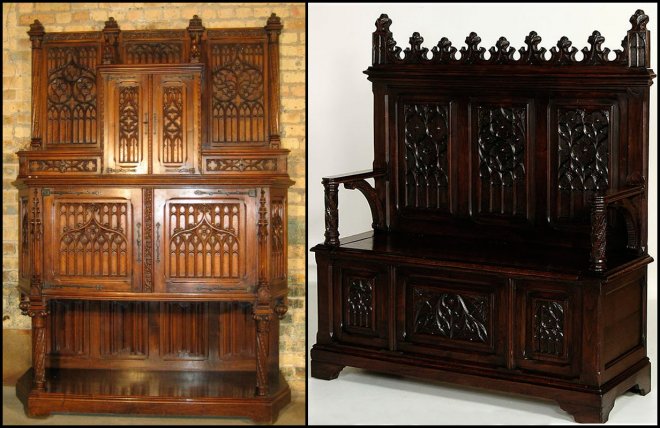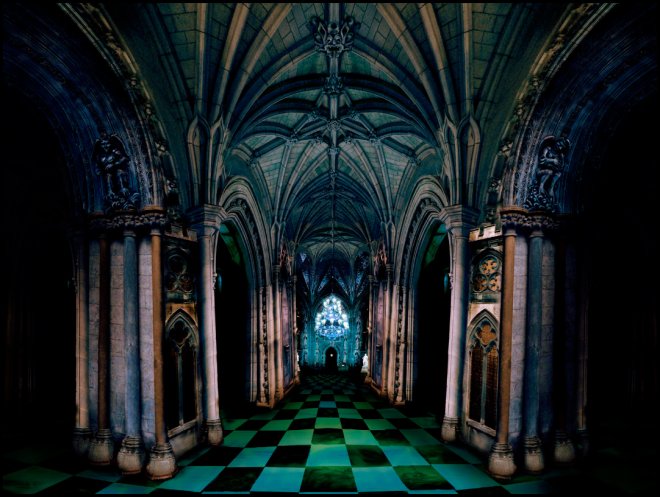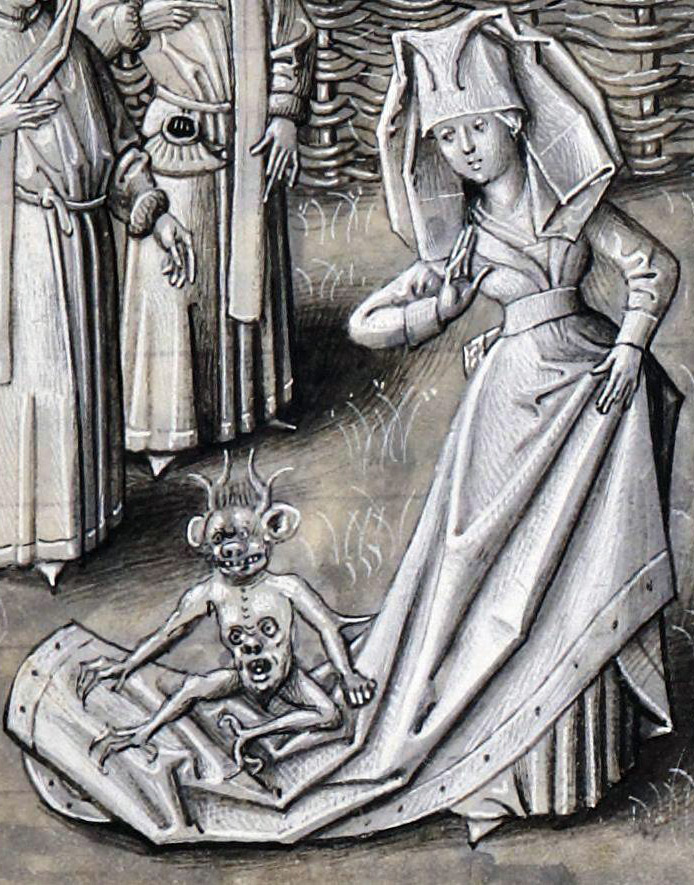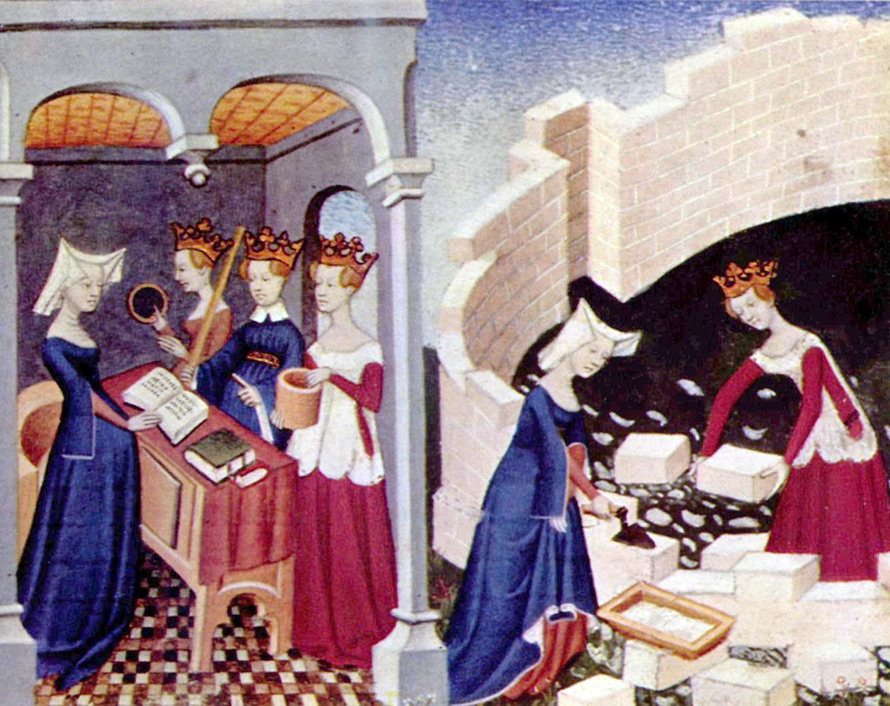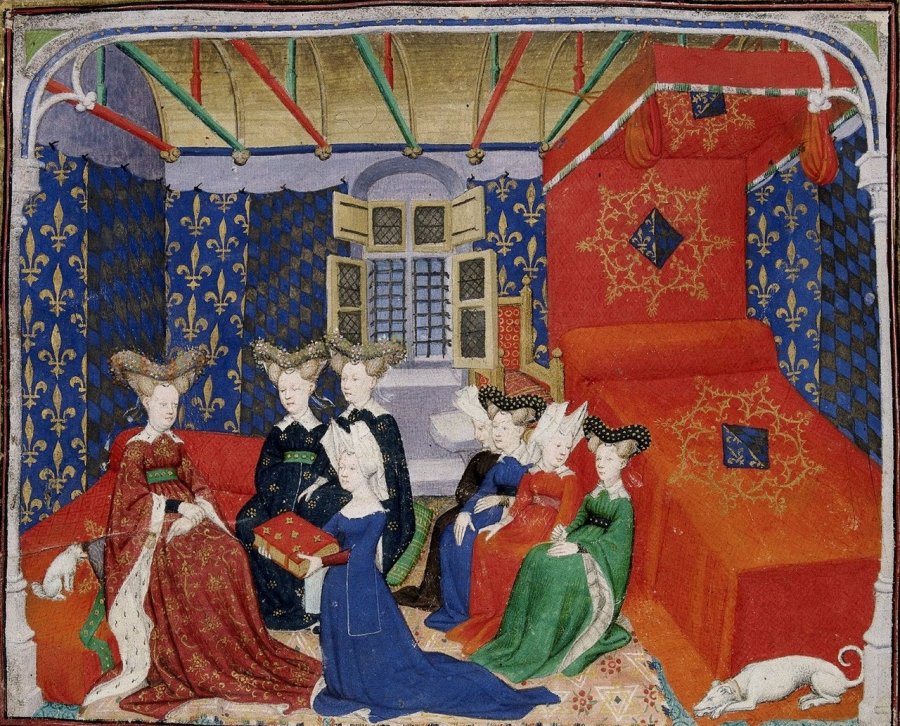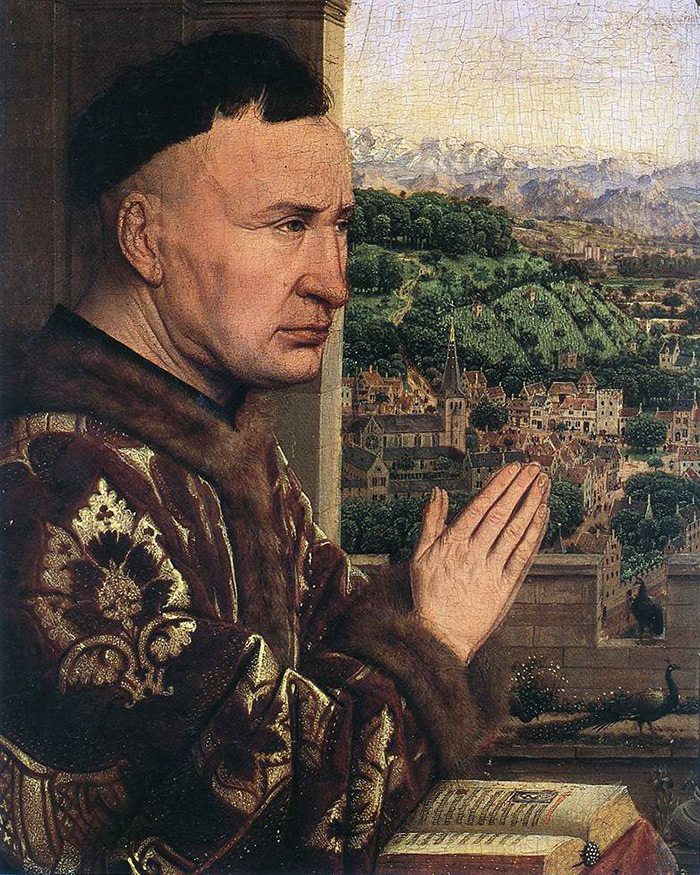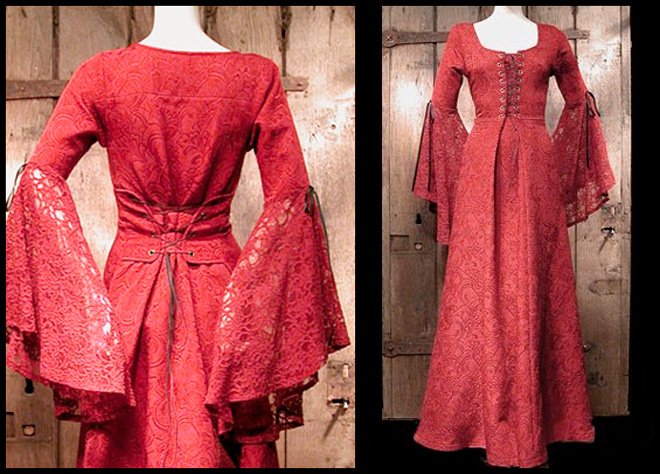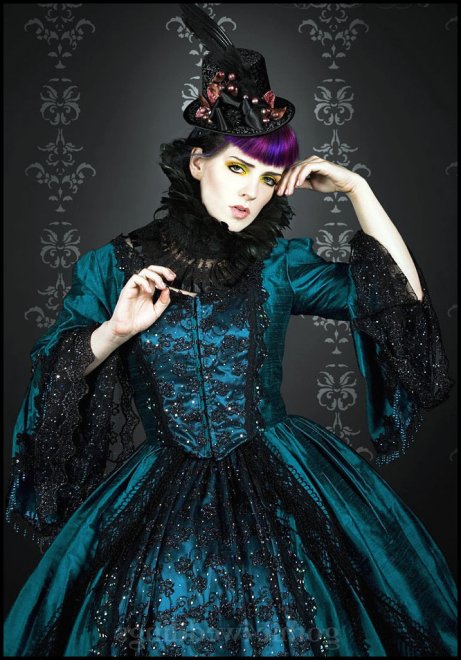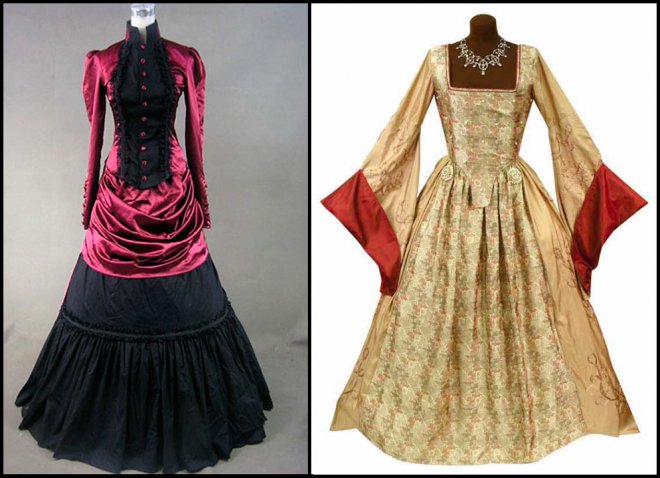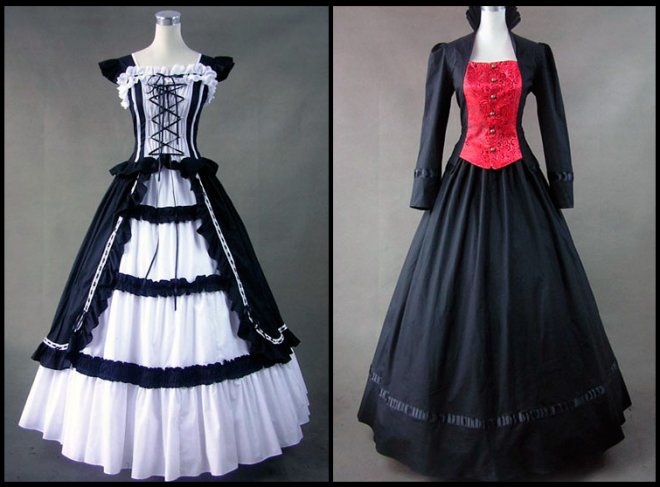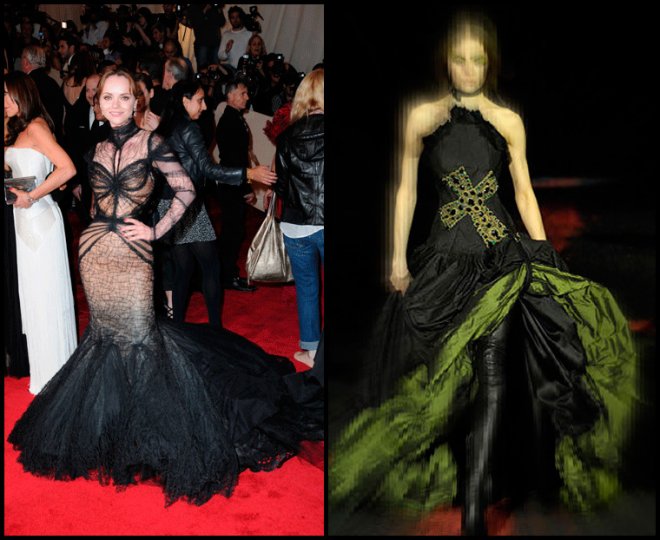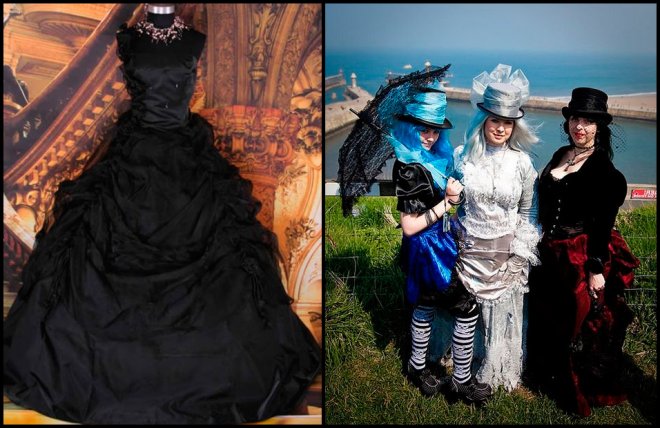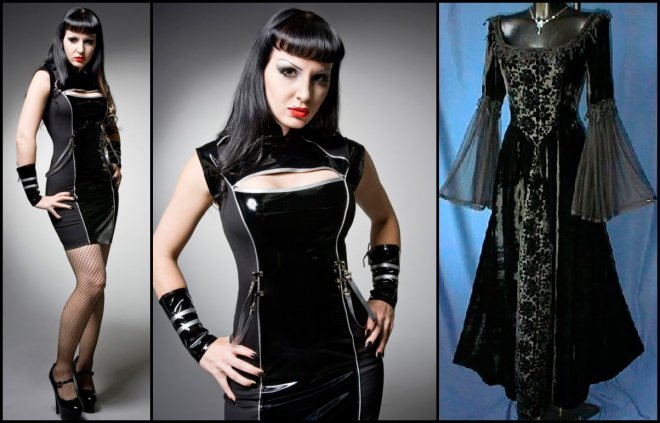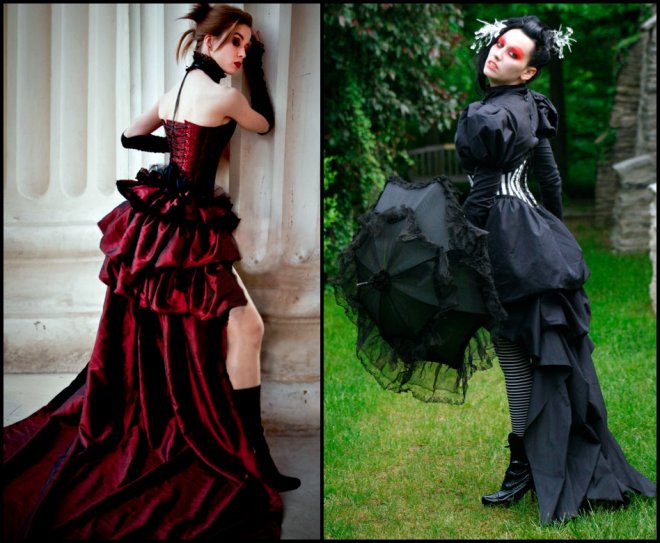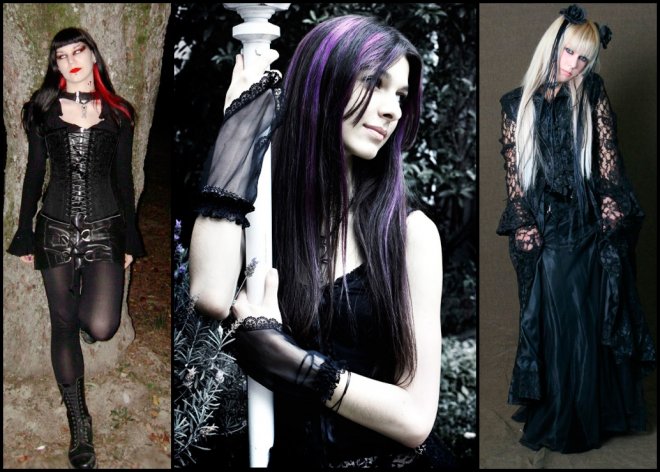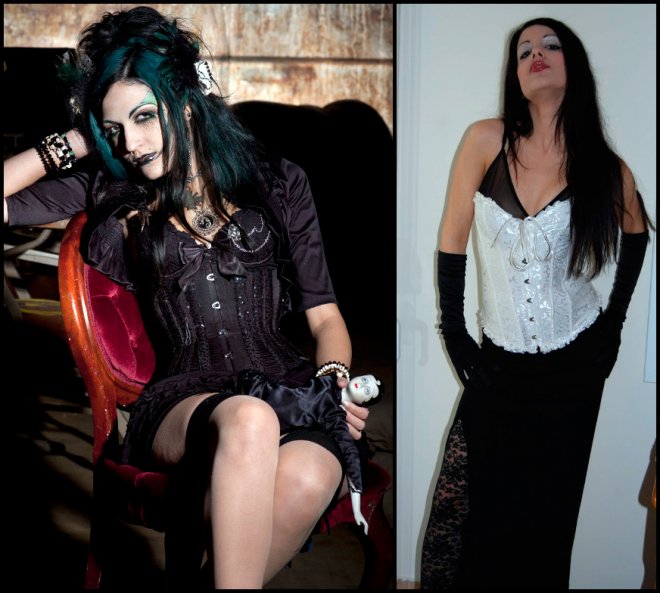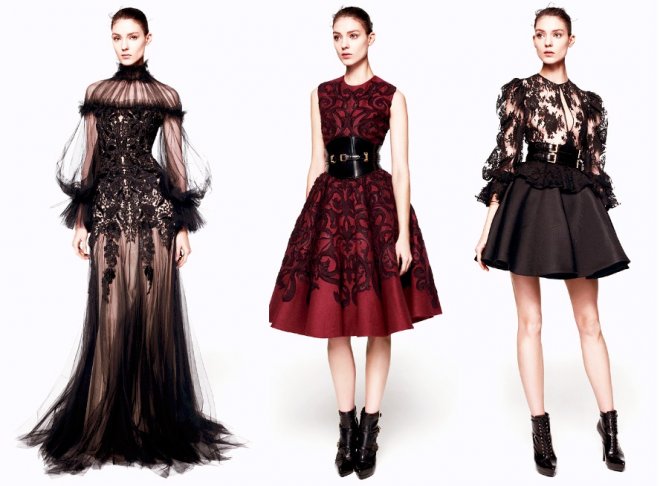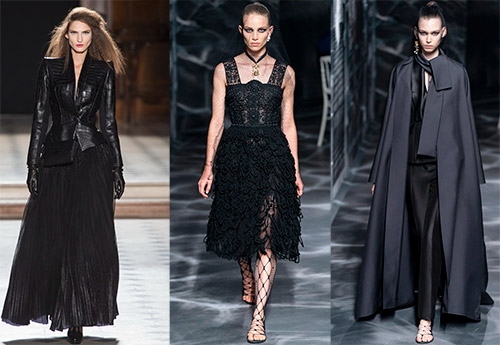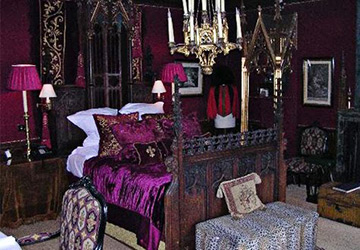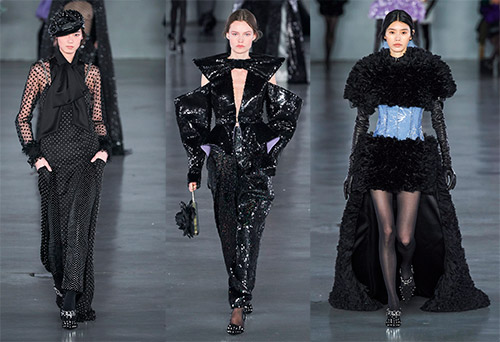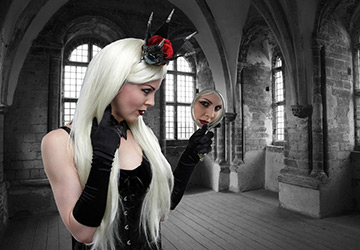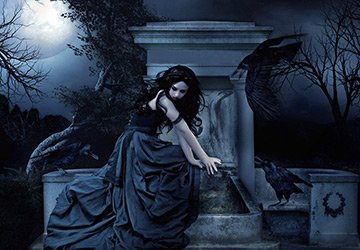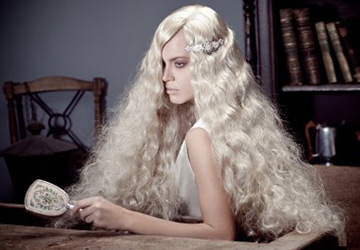Style
Gothic and Gothic style in clothes
Gothic is the ability to find
beautiful in the dark and terrible. (c)
Gothic - there is Gothic architecture, Gothic sculpture and painting. There is also a Gothic style in clothing, but before talking about it, let's look into the very history of the Gothic style.
Gothic is incredibly beautiful, but beautiful with a kind of dark, austere and cold beauty. Gothic originates in medieval Europe, during that very dark Middle Ages, when witches were burned at bonfires, the Catholic Church was strong, and loyal knights devotedly served the ladies of their hearts.
However, the thinkers of the Renaissance, the era that followed him, approximately in the 15th century, called the Dark Middle Ages. And the very word "Middle Ages" for the period that lasted from the 5th to the 15th centuries was also chosen by the thinkers of the Renaissance. After all, before this period there was antiquity so beloved by them, classical, correct, mathematically verified, the one that they were now reviving, and the Middle Ages is the middle between them and antiquity, the dark ages, centuries in which art refused to follow the laws of mathematics and proportion.
Gothic, the art of medieval Europe, was also called Gothic by the thinkers of the Renaissance. This word comes from the name of the Goth tribe - a barbarian tribe. Most of the tribes and peoples of modern Europe, excluding the Romans, were called barbarians during the time of Ancient Rome. So the thinkers of the Renaissance, Renaissance, dubbed all the art of medieval Europe barbaric, Gothic, disproportionate, incorrect, non-classical.
Today the art of Europe at the end of the 12th - 15th centuries is called Gothic. Gothic was in Of Italy, and in England, over time it will spread to almost all of Europe, but the Gothic was born in France. Gothic is a French style. Gothic was born in the XII century in the north of France, the Ile-de-France region.
Gothic is most clearly manifested in architecture. Cathedrals in Chartres, Reims, Amiens. Notre Dame Cathedral in Paris. Their main feature is the presence of pointed arches, which appear precisely in the Gothic era. Majestic, gloomy, cold, truly Gothic cathedrals. It was during the Gothic era that stained glass windows appeared. And for the Gothic, images of formidable and gloomy chimeras and gargoyles, monsters, whose sculptural images adorn many Gothic cathedrals, are characteristic.
Gothic style in medieval clothing.
But if Gothic was everywhere: architecture, sculpture, painting, if it was in the air itself, then, of course, it could not but manifest itself in clothes.
However, one should not forget that in those times when the Gothic style appears, outside the window of the Middle Ages, society is divided into estates, and the clothes of feudal lords, townspeople and peasants will differ significantly. So, for example, the townspeople, unlike the feudal lords, were forbidden to wear clothes made of silk, as well as long trains of dresses. It should be borne in mind that it was during the Gothic period that Europeans finally "learned" how to sew clothes, the tailoring craft became more perfect.
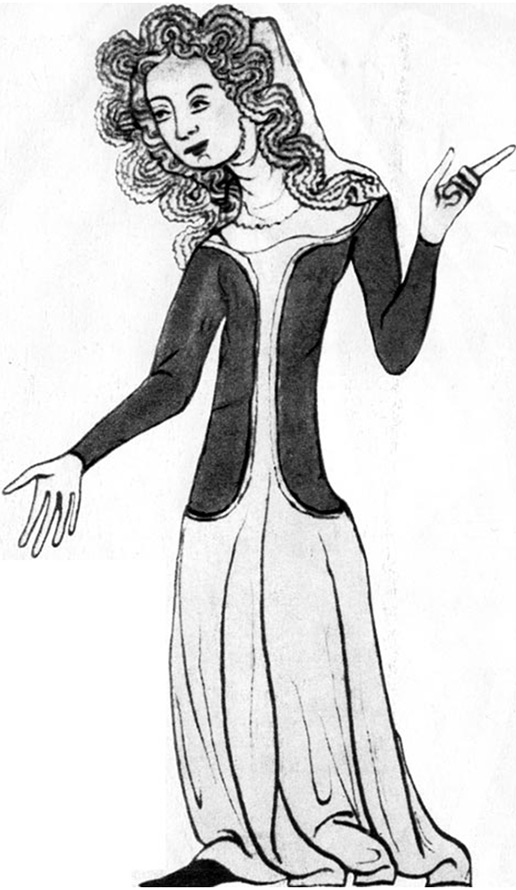
Girl of the Gothic period. Illustration from the Bible of 1340. The girl wears a wide veil falling over her shoulders, a long gathered dress, and a vest over it.
The birthplace of Gothic clothing, of course, was France. And to the point of absurdity, to the most extreme forms, Gothic clothing will be brought to Burgundy.
Elongated Gothic proportions appear in clothing, as in architecture. And if in cathedrals lancet arches, then in clothes shoes with pointed noses and strongly elongated pointed hats. Bright colors are in fashion (the dark color will come to Gothic much later), the favorite fabric is velvet. There is a lot of ornament on the clothes, and the ornament is mostly floral.
At that time, two versions of the suit appeared in men's clothing - loose and long, as well as narrow and short.The second option is more often preferred by young people. Since the XIV century, purpuen, a short jacket with narrow sleeves, complemented by narrow stocking pants, has entered men's fashion. Purpuen could also have long, decorative sleeves hanging down to the floor. Men from noble families also wore cotardi - a narrow caftan with both wide and narrow sleeves, wing-shaped sleeves and a blio caftan to the waist with a narrow bodice and wide hem not sewn on the sides.
A cloak at that time served as a piece of fabric bent in half and not sewn on the sides with a hole for the head, they call it an amice. But if the amice was sewn on the sides and had slots for arms or even sleeves, then it was called surcoat. The cloaks were both short and long.
Women's clothing consisted of kameeza and cotta. The cotta consisted of a narrow top, a wide skirt, and lacing at the back or side. The waist was elongated, a train was an obligatory element of the skirt (moreover, the longer the train, the more noble the lady), and folds were made on the skirt itself - it was considered fashionable to drape the fabric on the belly. Outerwear were round and semicircular raincoats with a cutout and a buckle fastener on the chest.
Both women's and men's shoes had pointed toes, the length of which sometimes reached 50 cm.
The most popular women's headdress at that time was the gorge - it resembled a pipe sewn from fabric with a slit in the back and expanding to the bottom. Ladies also wore high "two-horned" caps.
Thus, the main features of medieval Gothic clothing were pointed hats and toes of shoes, a thin and high laced waist, long trains, edges of clothing made in the form of teeth, in men - stockings-pants that fit tightly to their feet.
Gothic clothing and goths.
And here, exactly here, in this place, and right now, an unexpected turn is outlined in our article. In the 15th century, Gothic faded away, and other styles came to replace it, both in art and in clothing. Gothic will revive for some time in the 18th - 19th centuries, during the times of eclecticism, historicism, will revive like neo-Gothic, along with neo-baroque, neo-Renaissance, pseudo-Russian style, while in fashion there will be a return to the past, a mixture of eras, a mixture of directions. But this will be a short resurrection.
Gothic style in modern clothes
Much more interesting is the "resurrection" of the Gothic at the end of the 1970s of the twentieth century. The Gothic style in clothing today is called the style of the youth subculture of the ready. What do they have in common with the Gothic of the Middle Ages? Controversial issue. General as it is, so it is practically nonexistent. There is gloom, coldness, a certain severity, interest in the otherworldly. But at the same time, the clothing of modern Goths has more in common with the Gothic cathedrals and the chimeras that guard them than with the clothing of that period.
Goths, a youth subculture of the ready, appears along with a certain direction in music - gothic rock. One of the first bands to be labeled "gothic" was Joy Division, as critics described them.
Gothic style in modern clothes
And the Goths, since the 1980s, have developed a certain style of their own, their own fashion. The main signs of the Gothic style in clothing today are black color, metal jewelry with symbols of the Gothic subculture, often religious, mythological, and the Goths love silver, as well as unchanging, very characteristic make-up. Such makeup is worn by both men and women, its two main components are white face powder and dark eyeliner.
Hairstyles - often long hair, which the Goths dye black, less often red.
Ready-to-wear clothes can be stylized in the fashion of the 18th-19th centuries - lace, long dresses for women, long gloves, tailcoats and top hats for men, here both elements of neo-Gothic style in clothes and elements romanticism... Clothes of the ready can have similarities with the style of metalworkers - leather clothes, metal accessories, chains. In clothes, goths can be found as accessories and collars and bracelets with spikes.The vamp style is also popular among the Gotesses - lipstick and nail polish from bright red to black colors, black cosmetics, eyeliners.
One can also single out such a direction in the Gothic style as "corporate goth". Let's just say, this is an office option, an option that is used when it is impossible to dress in more extreme forms of the Gothic style. This trend is characterized by discreet jewelry, black business clothes.
All the differences and directions in the Gothic style are most vividly presented in the works of the Belgian photographer Viona Jelegems.
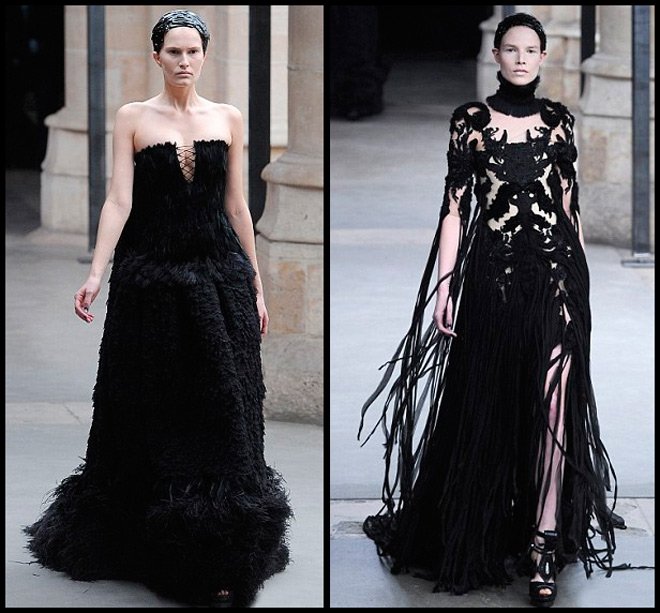
Gothic style on the catwalks
In the 1990s - early 2000s, gothic appeared on the catwalk. So collections Alexandra McQueen "Birds", "Hunger" and "The Shining" were not without references to Gothic plots and meanings. And Elle magazine wrote in 2009: “Neo-romanticists are celebrating the return of Victorian drama to the catwalks. Fluffy skirts, ruffled blouses and black lace will turn you into a real gothic heroine. "
In the shows of the spring-summer 2024 collections, the gothic style was presented by Jean-Paul Gaultier, who, however, mixed it with rock-punk, and Givenchy. Even today, in 2024, one can be sure that the Gothic, one way or another, will take its place on the catwalks, among other directions and trends.
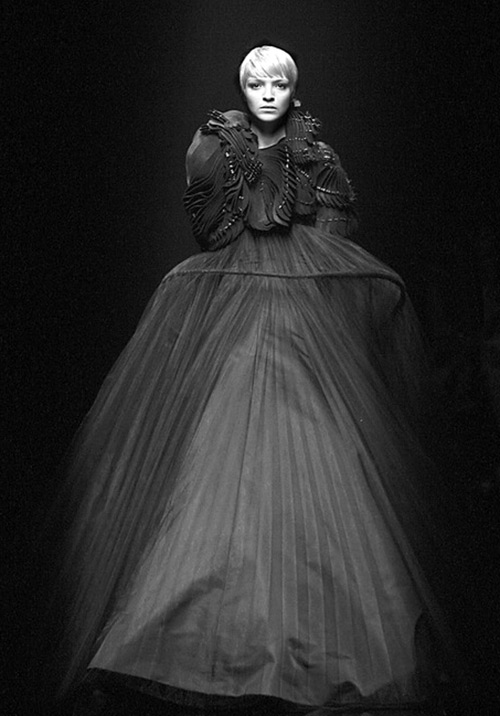
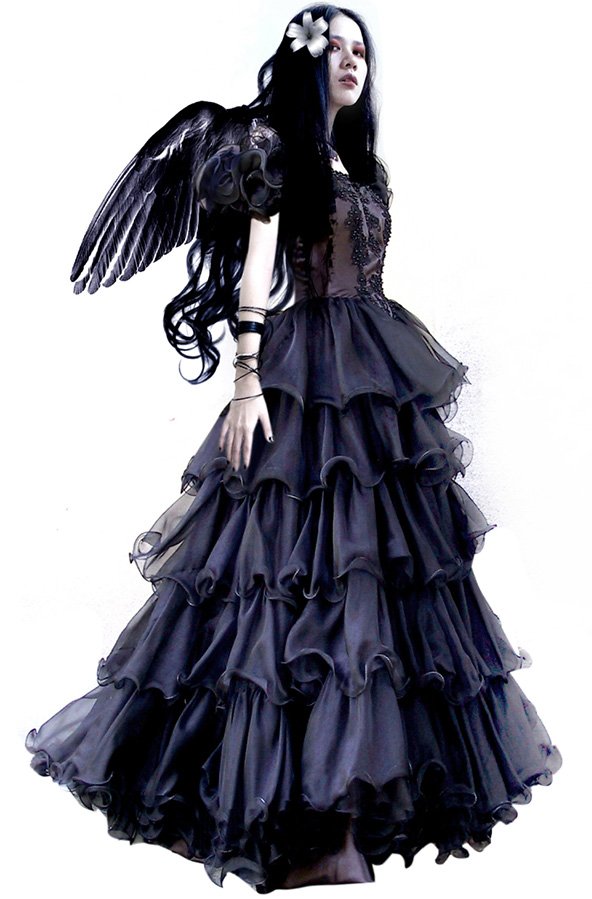
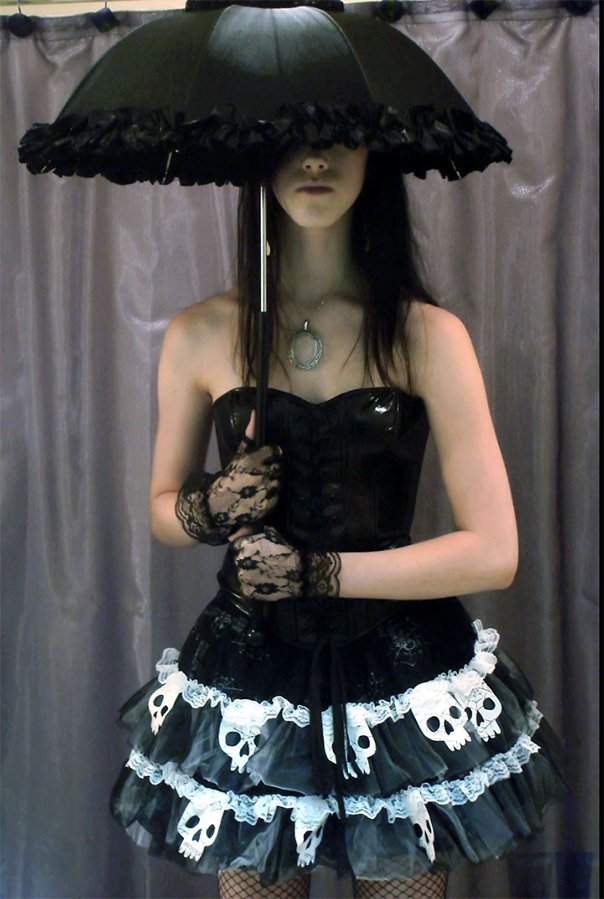
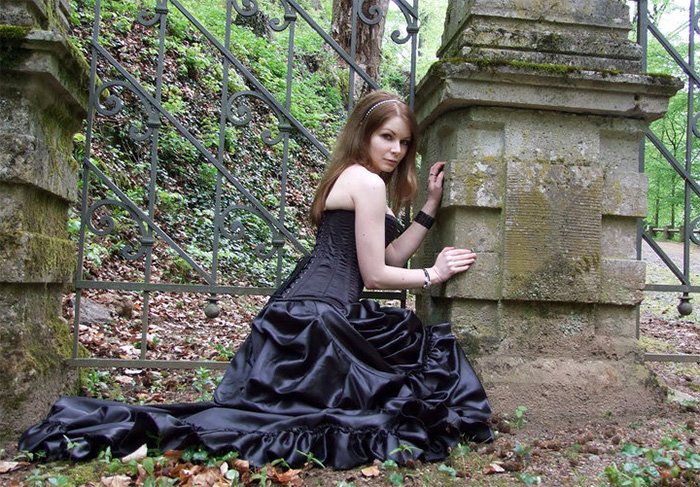
Comments and Reviews
Add a comment
Rating news
Shades of clothing that make women look younger
What shades of hair make women younger: rules and photos
Funny wedding dresses - photos and ideas
12 most expensive down jackets for the winter
How to look 25 at 40: tips from supermodels
Beautiful schoolgirls
Anti-aging haircuts and hairstyles for women
Fashionable skirts for autumn and winter
Fashionable women's trousers for the cold season
Fashionable and stylish sandals for summer 2024
Spring-summer 2024
 Fashionable dresses and tops with thin spaghetti straps
Fashionable dresses and tops with thin spaghetti straps
 Bandana tops: how to wear stylishly and beautifully
Bandana tops: how to wear stylishly and beautifully
 How to put together the perfect men's wardrobe for the summer
How to put together the perfect men's wardrobe for the summer
 Fashionable shorts for spring-summer 2024
Fashionable shorts for spring-summer 2024
 Fashionable skirts for spring-summer 2024: a guide to online shopping
Fashionable skirts for spring-summer 2024: a guide to online shopping
 The most fashionable dresses spring-summer 2024: styles and colors
The most fashionable dresses spring-summer 2024: styles and colors
 Fashionable total look 2024: ideas of images and trends
Fashionable total look 2024: ideas of images and trends
